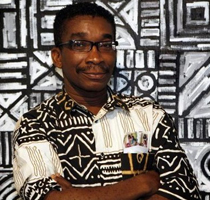On a number of platforms and in his writings, the latest one being his book which he co-authored with Chika Okeke-Agulu, Contemporary African Art Since 1980, Okwui Enwezor frames the genesis of contemporary African art, as he defines it, within a historical time capsule from the 1980s to 1990s when harsh economic conditions in Africa, worsened by the ill-fated World Bank/International Monetary Fund (IMF)-prescribed SAP (Structural Adjustment Programs); fratricidal wars; corrupt, despotic governments; drought, famine, pestilence, etc.; a total breakdown of political and social structures, drove African artists, writers and intellectuals en masse to the West, apparently shifting the polarity of African art production and scholarship to the West.24This presupposes that the African Artist’s migration to the West is what gave birth to contemporary African art, predicating its global entry, reception and recognition. This further presupposes Enwezor turning his back to art on the African continent to focus his attention entirely on African Diaspora artists, making art in the African Diaspora the leitmotif of his curatorial activities and his professional career. He writes in his critique of africa ’95:
But much has changed in the continent. Major artists, intellectuals, and writers pressurized by totalitarian regimes have either fled into exile or have been silenced by censorship. Younger artists, in a climate of apathy and dire economic and political conditions, are no longer indebted to a vision of pan-Africanism which was supposed to be a binder of African consciousness and identity, and have joined the exodus. The unfortunate outcome of this flow of talent has meant that a great many African artists who either once contributed or would have contributed immensely to the debate of Africa’s 20th Century are no longer resident in the continent. This is a major shift, reversing much of the pioneering work undertaken in the 50s and 60s.
There are serious factual inaccuracies in this assertion of Enwezor. Unlike the Second World War, which drove most of the twentieth century avant-garde artists from Paris, which was the world capital of art then, to New York, thereby making New York the new world capital of art (It has remained so till today), the exodus which took place from Africa, because of the strangulating economic conditions, dictatorial regimes, SAP, etc., paradoxically, did not shift in any way the production of art from Africa to the West, warranting the current marginalization of contemporary art on the continent. I will challenge Enwezor any day on this issue.





No Comments so far ↓
There are no comments yet...Kick things off by filling out the form below.